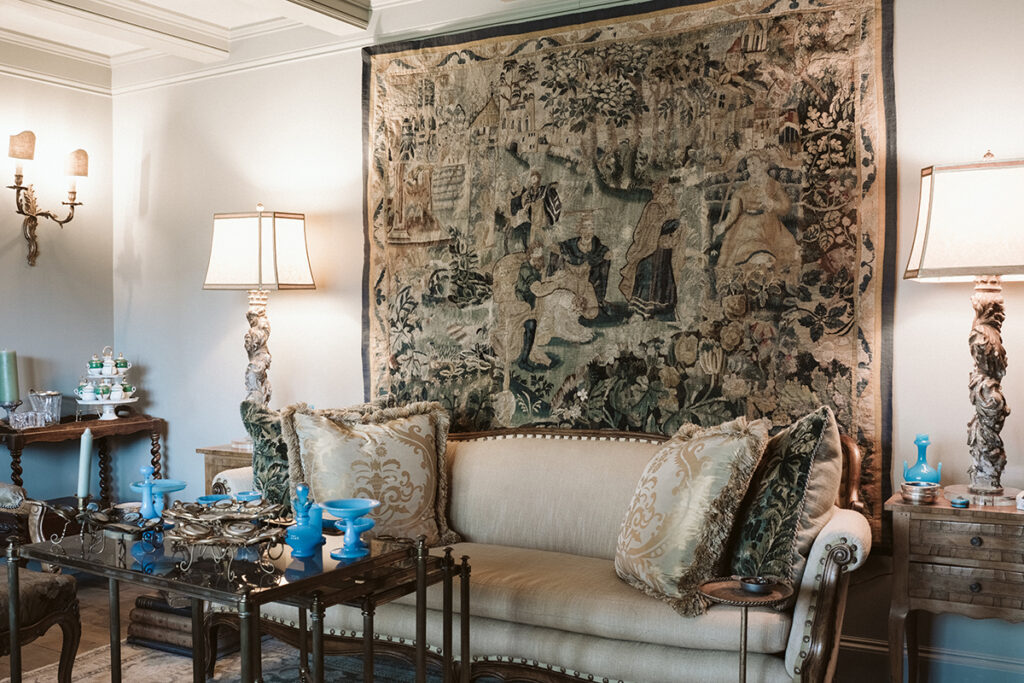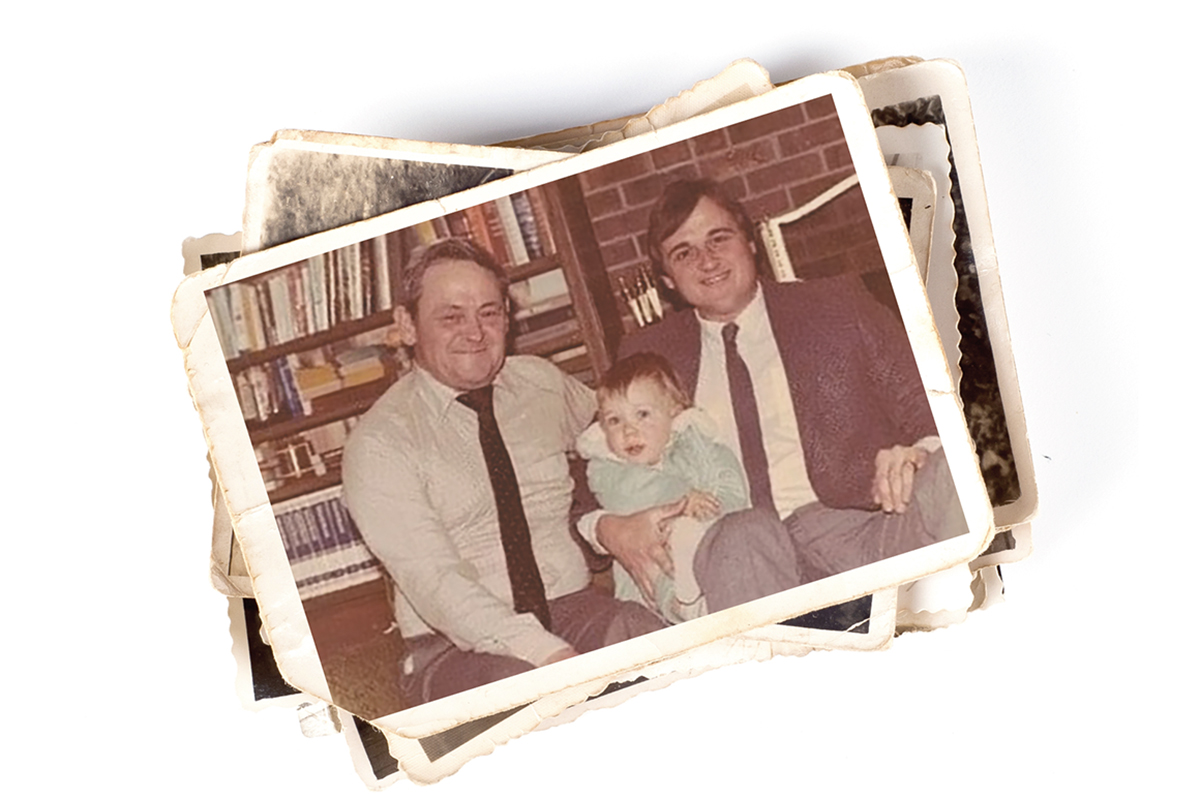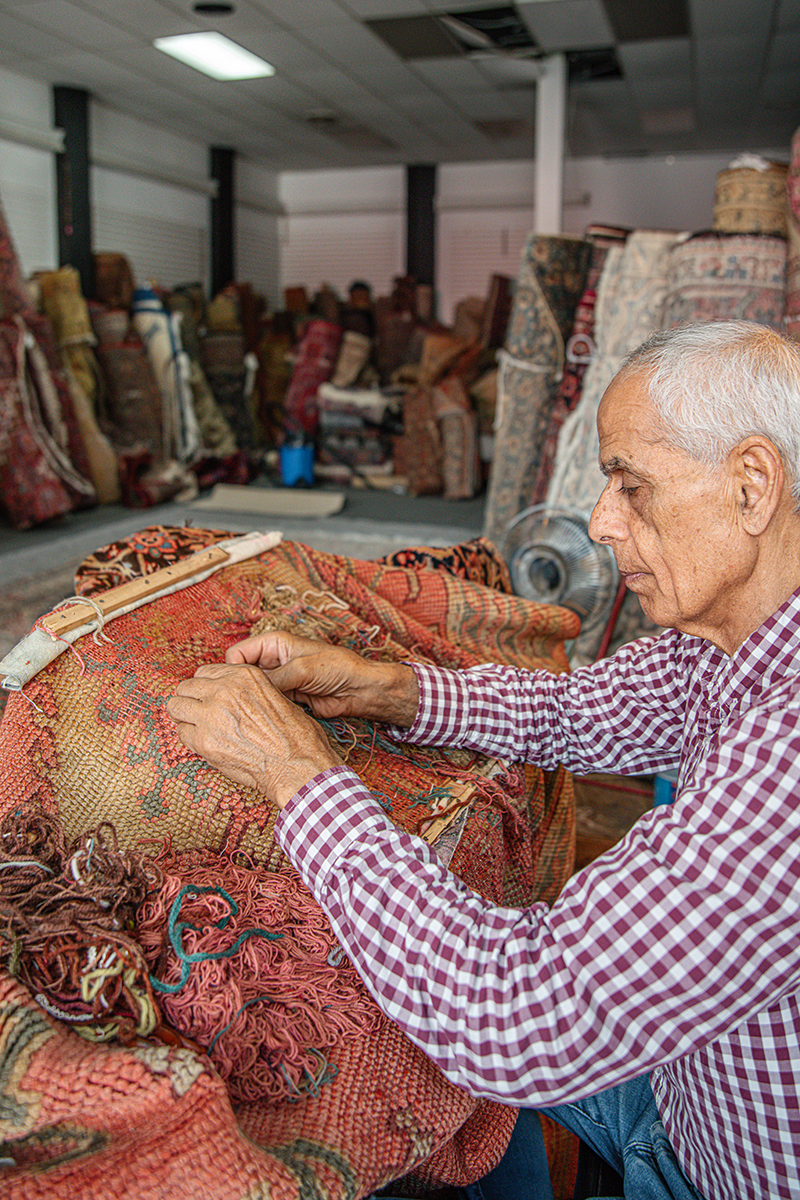The idea for sisters Gwen McClure and Teri McClure Elliott’s business began in Lyon, France.
In the mid-90s, Teri visited Gwen, who was living there at the time and working for the FBI. After spending days wandering countless boutiques and markets, the sisters had a “what if” moment. What if they opened an antique shop in the states? What began as a casual idea quickly turned into a passion project, and by the summer of ’99, they had their own booth at Mission Road Antique Mall.
More than two decades later, the sisters’ venture, French By Design Antiques, has expanded nationally, with a selling warehouse in Kansas City’s West Bottoms and a showroom in Round Top, Texas. “We continue to sell things that we both love, that we both collect,” Gwen says. She and Teri travel to France several times a year to handpick new finds for their collection—and with the resurgence of French-inspired home decor, business is busier than ever. Gwen has plenty of tips for bringing this timeless style into your own home.
Tapestries
Tapestries are rooted in centuries of French craftsmanship, and you can find them in nearly every home or market in France, Gwen says. They range from small, frameable pieces to museum-quality drapes that stretch to 14 feet long. “They’re very collectible,” she says. “Now, all of a sudden, they’ve become really, really hot again in the U.S.”
Long before they were a decor trend, French tapestries were symbols of status and artistry, so treat them like the statement pieces they are. On a blank wall where you might default to a gallery wall, consider one of these woven textiles. A historic scene or rich floral pattern can add texture and depth to a space and can look surprisingly modern when paired with clean-lined furniture.
Opaline
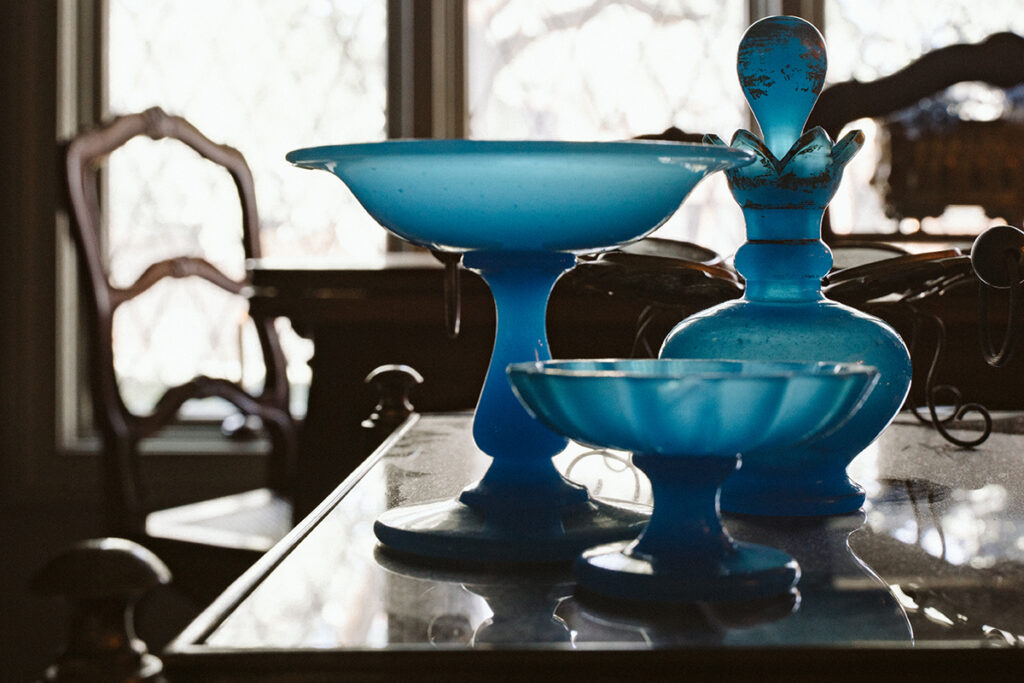
Opaline, a style of delicate blown glass first created in France in the late 1700s, started out as small, jewel-toned tchotchkes like perfume vials and tiny jars. “By Napoleon III in the 1840s, [the French] created all kinds of opaline ring holders and trays,” Gwen says. Although interest dipped around the turn of the 20th century, opaline had a major revival in postwar France in the ’40s and ’50s, evolving into milky pastel vases and glassware.
The beauty of opaline is its versatility: You can create a cohesive look with a single color palette, mix and match hues, cluster several pieces together or let one statement piece stand out. “Even just one on a tray or as part of a table setting can be really charming,” Gwen says.
Kitchenalia

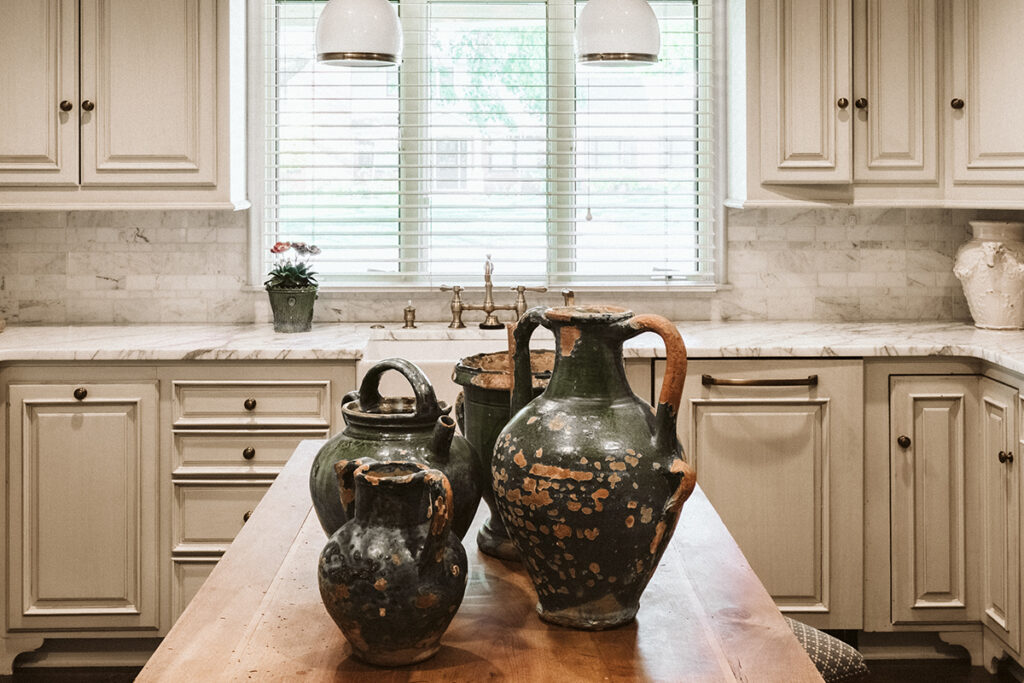
In a French kitchen, beauty and utility go hand in hand. Imagine stacks of colorful cookbooks, gleaming copper pots, and Majolica—bright, hand-painted plateware, bowls, serving cradles, and pitchers—adding layers of texture and color. And those wooden charcuterie boards you’ve stashed over the years? Leave them out on display.
Cocktail Supplies
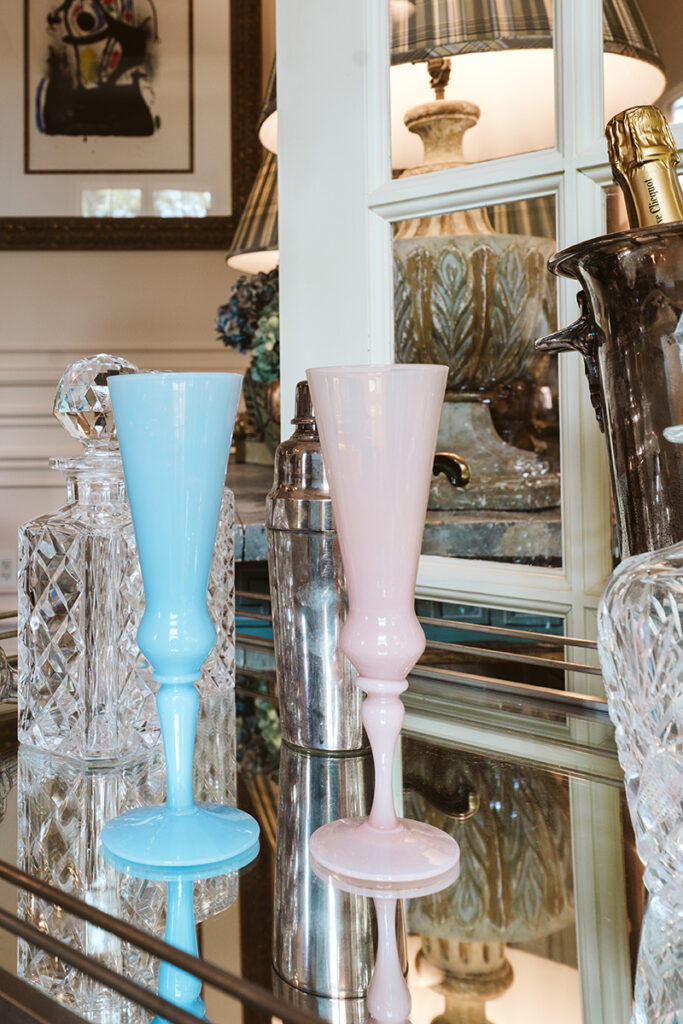
“A lot of French bar carts were designed in the 1940s and ’50s,” Gwen says. Pair one with a tufted club chair or brass accents—like candlesticks, trays or an ice bucket—to fully embrace the Parisian cocktail hour vibe (French 75 in hand, of course).
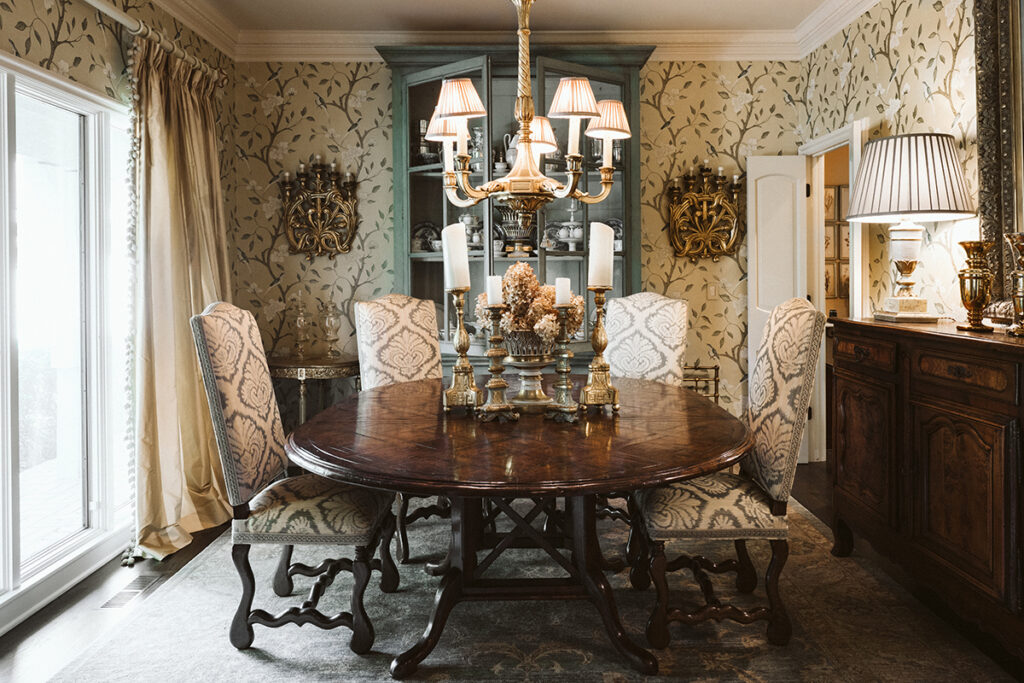
Gwen adds that cocktail tables from the ’20s and ’30s are also making a comeback, especially the petite ones that tuck easily into a corner or accent an entryway.
Gilt

Gilt is one of those things that, even in small doses, can make a big impact. The thin gold-leaf material, traditionally applied to furniture, picture frames and mirrors, has deep roots in French design. Beyond its Versailles-like elegance, gilt’s reflective qualities can make a space feel larger, too.
Joie de KC
Calling all Francophiles! From artisanal goods to jewels, these shops bring a little piece of France to Kansas City.
Prize Home + Garden
Antique collector Steve Rogers has a stunning furniture collection from all over Europe, ranging from the 17th century to the 1970s. prizeantiques.com
French Market
Inspired by French épiceries and traiteurs (traditional food shops), this Prairie Village store offers everything from French cookbooks and vintage finds to scratch-made goods shipped directly from France. frenchmarketkc.com
Coki Bijoux Fine Jewelry
After studying traditional metalsmithing and jewelry making in Paris under master jeweler Thierry de Bourqueney, owner Coki Reardon brought her French-inspired artistry to the Crossroads. cokibijoux.com
Emilie’s French Teas
Emilie Jackson, a native of Nantes, France, shares her love for rare French teas at her Waldo shop. emiliesfrenchteas.com

